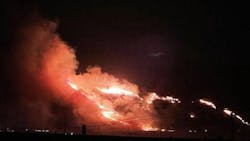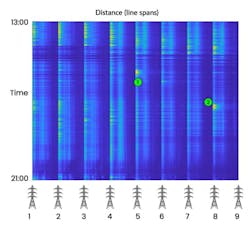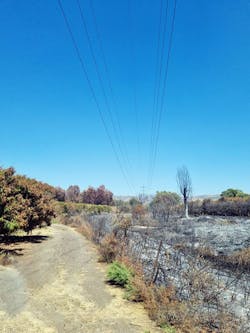Harnessing the Grid for Wildfire Detection - Fiber Sensing from Above
Not your grandfather’s wildfire anymore
The Wildfire season has changed. Once most active between the months of April through September, wildfires are now a threat year-round in the US. The fires are generally getting worse, too. According to the National Interagency Fire Center (NIFC), of the 10 years with the largest acreage burned, all have occurred since 2004, including the peak year in 2015. This period coincides with many of the warmest years on record nationwide.
Wildfires are appearing in states that are not typically considered fire-prone, such as Louisiana, where drought and a long heat spell contributed to the terrible conditions that spawned more than 230 fires during the 2023 summer months alone.
Wildfires take a tragic human toll. The fire on Maui island on August 8, 2023, was the deadliest in modern history, taking 100 lives and wiping out the entire seaside town of Lahaina, while the infamous 2018 Camp Fire in northern California claimed 85 lives and burned more than 18,000 structures, mostly homes. There is a significant financial cost to fight wildfires; in 2022 alone, according to NIFC, the federal government spent more than $3.5 billion just on fire suppression. That figure does not include direct financial losses, or the cost of lost business revenue and personal income in the wake of fires. Since 2000, there have been 16 wildfire events that caused more than $1 billion each in direct damage. At the height of wildfire season in 2023, there were 53,610 wildfires in the U.S., burning 2,607,698 acres, a little less than the area of Delaware and Rhode Island combined.
Certainly, failing electric transmission infrastructure including towers and conductors can and have sparked wildfires. But frequently, bulk power system infrastructure is itself damaged by them, leading to power outages lasting hours to weeks. And the nature of the fires—burning a scar across huge swaths of land—creates more problems. The scorched, smoldering earth left behind may inhibit and delay access to repair workers for days, and result in lost revenue in the millions for utilities.
Early Wildfire Detection: A Critical Necessity
Early detection and immediate warning of wildfires is essential to a reliable and resilient electric grid. There are a number of technologies that purport to do this. However, while functional, these often present challenges in terms of efficiency and effectiveness. Satellite monitoring, though capable of covering vast areas, can be hindered by cloud cover and the delay in data processing times. Aerial surveillance, utilizing manned aircraft and drones, offers real-time imagery but is limited by flight times, weather conditions, and labor costs. Infrared camera's effectiveness is contingent on the installation locations and can be obstructed by terrain or vegetation. Finally, ground patrols, a traditional method, ensure direct human observation but are significantly limited by the ground they can cover and the speed at which they can respond to remote or inaccessible areas.
Optical Fibers - monitoring all along the power line
Fiber Sensing offers another, more efficient monitoring technology for utilities to detect wildfires in real time. Prisma Photonics utilizes the optical ground wire (OPGW), which can be found on top of the transmission network, turning it into a highly sensitive sensor. Optical fiber sensing uses the existing optical fiber, monitoring for changes in light reflected from the fiber. Laser signals are transmitted into the fiber from a substation, monitoring back reflections. When an external event, such as a large temperature change due to a moving fire front, hits the fiber, the reflections change, and an alarm can be triggered with the location. Prisma Photonics offers this power line monitoring without any new installations on the conductors or towers at all.
This concept was demonstrated with a brushfire that took place in August 2023 in the northern parts of Israel. A fire broke out near a 160kV line, which is monitored by PrismaPower, a power line monitoring suite. Starting at about 1:00 in the afternoon, the fire swept through the dry grass and trees, presenting a significant threat to local property and residents.Aftermath
The ability to discover, track, and alert on a specific tower location without having to install more sensors while getting a real-time response without the regular challenges of traditional monitoring may open up new ways to monitor the vast countryside where transmission lines pass. In rural areas, where wildfires can start, growing in size and power before these are noticed - fiber sensing can become a unique tool to help transmission providers protect lives, the environment, and their assets.
As the climate warms, utilities will continue to face increased threats to operations and physical assets. Whether congested grids due to a global shift to electrification or more severe weather threatening transmission, grid operators are increasingly relying on technologies that can enhance insight through real time data.
The brushfire on Mt. Gilboa was one of those new, historically unprecedented threats to a power utility. And thanks to Prisma Photonics, utilities are now able to see those threats before a brushfire becomes a wildfire.
About the Author
Tiffany Menhorn
Tiffany Menhorn is the Head of Sales North America at Prisma Photonics.




